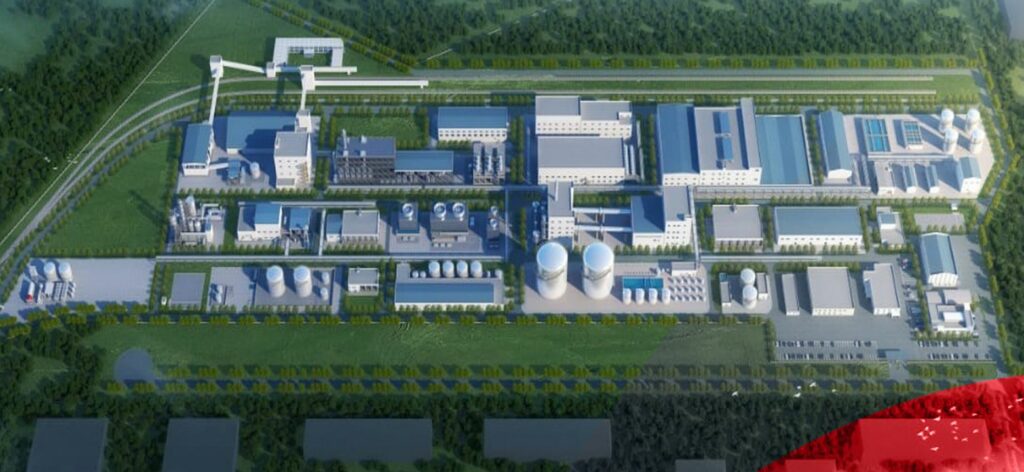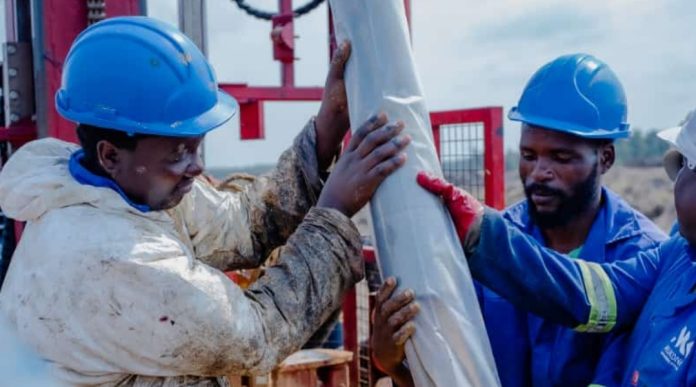South Africa’s push to industrialize its mineral wealth has gained new momentum with the African Development Bank’s (AfDB) approval of a $75 million financing package for Nyanza Light Metals (Pty) Ltd., a titanium dioxide processing company based in Richards Bay.
The funding, part of a broader syndicated facility involving the Africa Finance Corporation and the African Export-Import Bank, aims to establish an 80,000-tonne-per-year titanium dioxide pigment plant, Africa’s first large-scale facility of its kind, marking a key step towards reducing the continent’s reliance on imported industrial raw materials.
The Nyanza project is designed to change a long-standing pattern in African trade: exporting raw minerals at low value while importing refined products at a premium. By processing titanium ores locally into high-value titanium dioxide pigment, an essential input in paints, coatings, plastics, cosmetics, and even pharmaceuticals, South Africa stands to capture greater economic value, build industrial resilience, and generate meaningful employment.
The project is located within the Richards Bay Industrial Development Zone (RBIDZ), a strategic hub for mineral beneficiation and export-led industrialization.
 The financing includes $25 million from the Africa Growing Together Fund (AGTF), a co-financing initiative between the AfDB and the People’s Bank of China. Construction activities, including geotechnical studies and piling works, are already underway, with completion expected before the end of the decade.
The financing includes $25 million from the Africa Growing Together Fund (AGTF), a co-financing initiative between the AfDB and the People’s Bank of China. Construction activities, including geotechnical studies and piling works, are already underway, with completion expected before the end of the decade.
Once operational, the plant is projected to create 850 direct jobs and an estimated 2,400 construction jobs, with 45% reserved for women, 30% for youth, and 20% for low-income earners, a deliberate effort to ensure inclusive economic participation in South Africa’s evolving industrial landscape.
The AfDB’s Vice President for Private Sector, Infrastructure and Industrialization, Solomon Quaynor, said the project reflects the Bank’s mission to transition Africa from an exporter of raw materials to a continent that adds value to its resources. “By supporting Nyanza, we are changing Africa’s old paradigm of exporting low-value raw materials and relying on imported finished products,” Quaynor said. “We are building an industrial economy that creates inclusive opportunities across the continent.”
Nyanza’s President and CEO, Donovan Chimhandamba, described the partnership as transformative for both the company and the broader African industrial ecosystem.
“This investment is more than financial support; it is a vote of confidence in Africa’s capacity to lead in mineral beneficiation,” he said. “For decades, Africa has exported its minerals only to buy them back as expensive finished products. We are determined to end that cycle by manufacturing titanium dioxide locally and exporting it globally.”
Across Africa, few countries have managed to break away from the raw-material export model that has defined the continent’s trade for over a century. Yet examples of success are beginning to emerge. Morocco’s phosphate industry, led by OCP Group, now produces over 12 million tonnes of processed fertilizers annually, making it the world’s largest exporter and a model of how strategic beneficiation can multiply national revenue.
In Ghana, the government’s investment in local bauxite and lithium processing facilities has begun to attract foreign investors and position the country for higher export margins.
Similarly, Namibia’s new lithium refinery, launched in 2024, is set to process ore for both local and international battery manufacturers, demonstrating the profitability of keeping more of the value chain on African soil.
For South Africa, the Nyanza project could mirror these examples. The titanium dioxide market is valued at over $20 billion globally, with growing demand driven by construction, renewable energy, and automotive manufacturing. Yet, Africa currently accounts for less than 1% of global production despite holding nearly 30% of the world’s titanium reserves. By establishing domestic production capacity, South Africa can tap into this global demand while shielding itself from supply chain disruptions and foreign price volatility.
The project also aligns with South Africa’s National Development Plan 2030, which prioritizes industrial diversification, job creation, and inclusive growth through mineral beneficiation. Moreover, its green and sustainability-linked design ensures environmental accountability. Nyanza has committed to energy-efficient production, water recycling, and low-carbon technology in alignment with the AfDB’s “High 5” priorities, particularly “Industrialize Africa” and “Build Climate-Resilient Infrastructure.”
Read also: Old Mutual’s R2.2 Billion 10X deal positions South Africa as a hub for sustainable investment growth
From a continental perspective, the initiative signals growing maturity in Africa’s ability to mobilize structured, sustainability-oriented financing. Following Senegal’s $215 million Senelec Green and Sustainability-Linked Bond, Kenya’s green bond program for infrastructure development, and Egypt’s $750 million sovereign green bond, Nyanza’s project confirms that the continent’s capital markets are becoming more innovative and capable of funding complex industrial ventures tied to sustainability outcomes.
The Nyanza plant, if implemented successfully, could not only reduce South Africa’s dependence on titanium dioxide imports, currently estimated at $400 million annually, but also open export channels to regional markets, particularly Nigeria, Kenya, and Egypt, where industrial demand for titanium-based pigments continues to grow.
The African Development Bank’s decision to anchor the financing further demonstrates how targeted investments in manufacturing can transform entire industries. By backing projects that combine green technology, gender inclusion, and regional value chain integration, the Bank is helping African economies move beyond extraction toward sustainable industrial growth.
Ultimately, Nyanza Light Metals’ venture is more than an industrial project; it is a statement about Africa’s readiness to reclaim its mineral wealth and define its own industrial destiny. If the titanium dioxide plant in Richards Bay delivers on its promise, it could set a new standard for how African nations turn their natural endowments into engines of sustainable prosperity.






